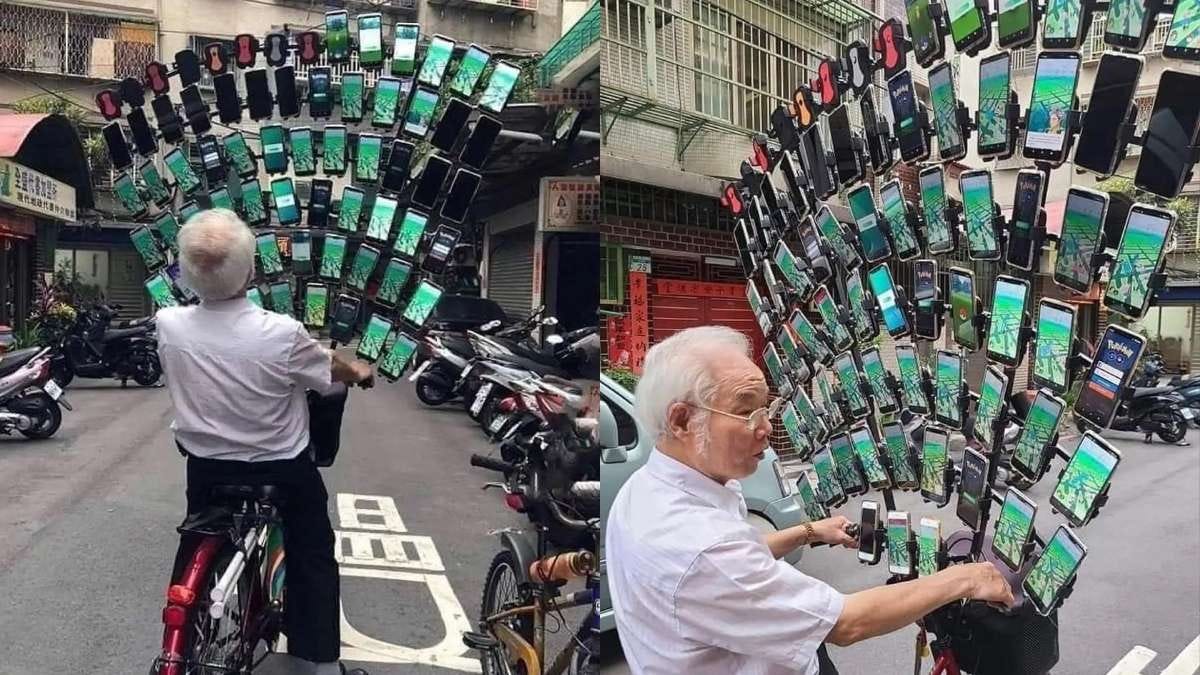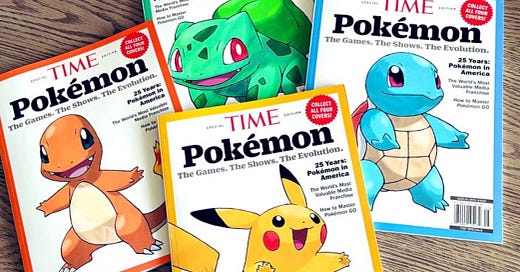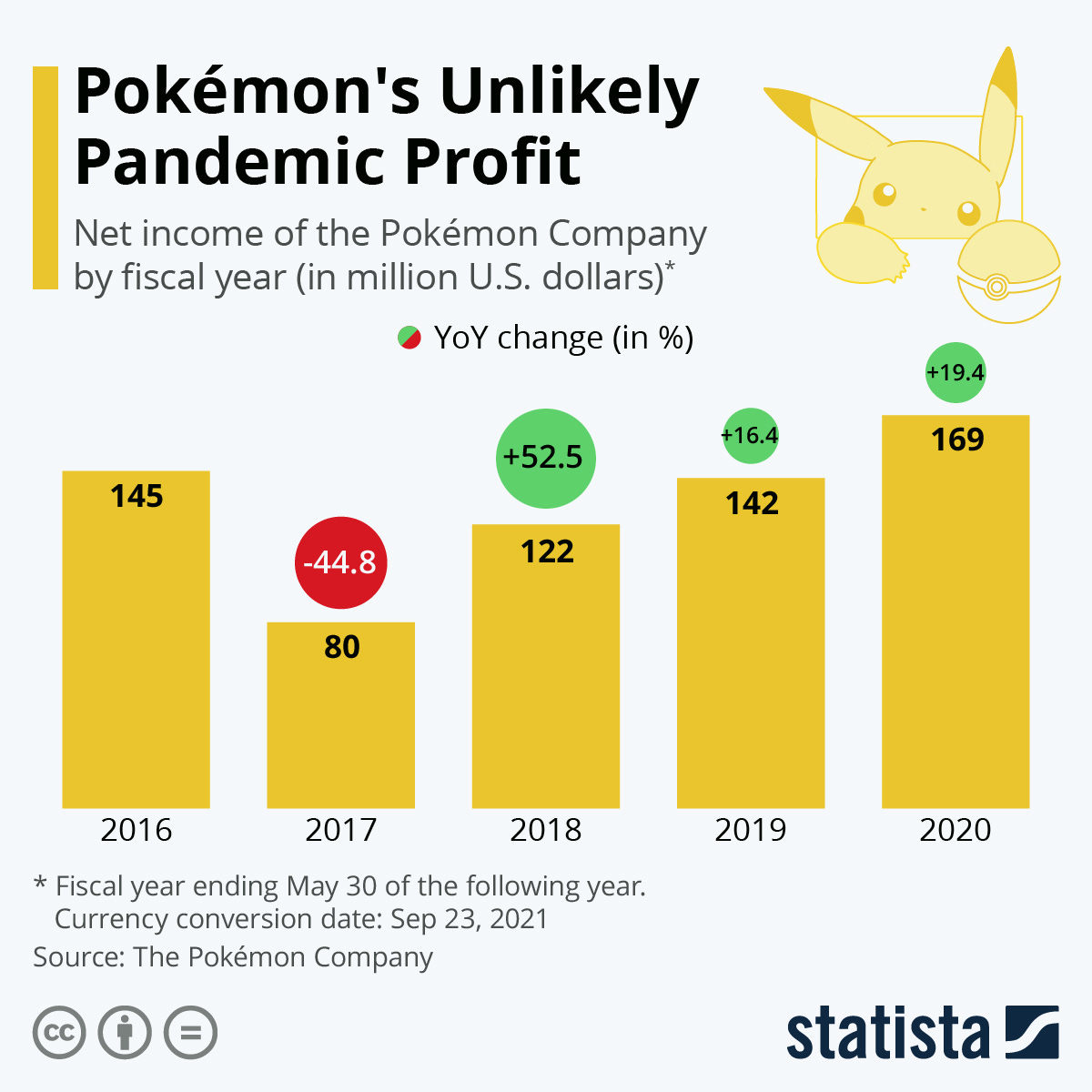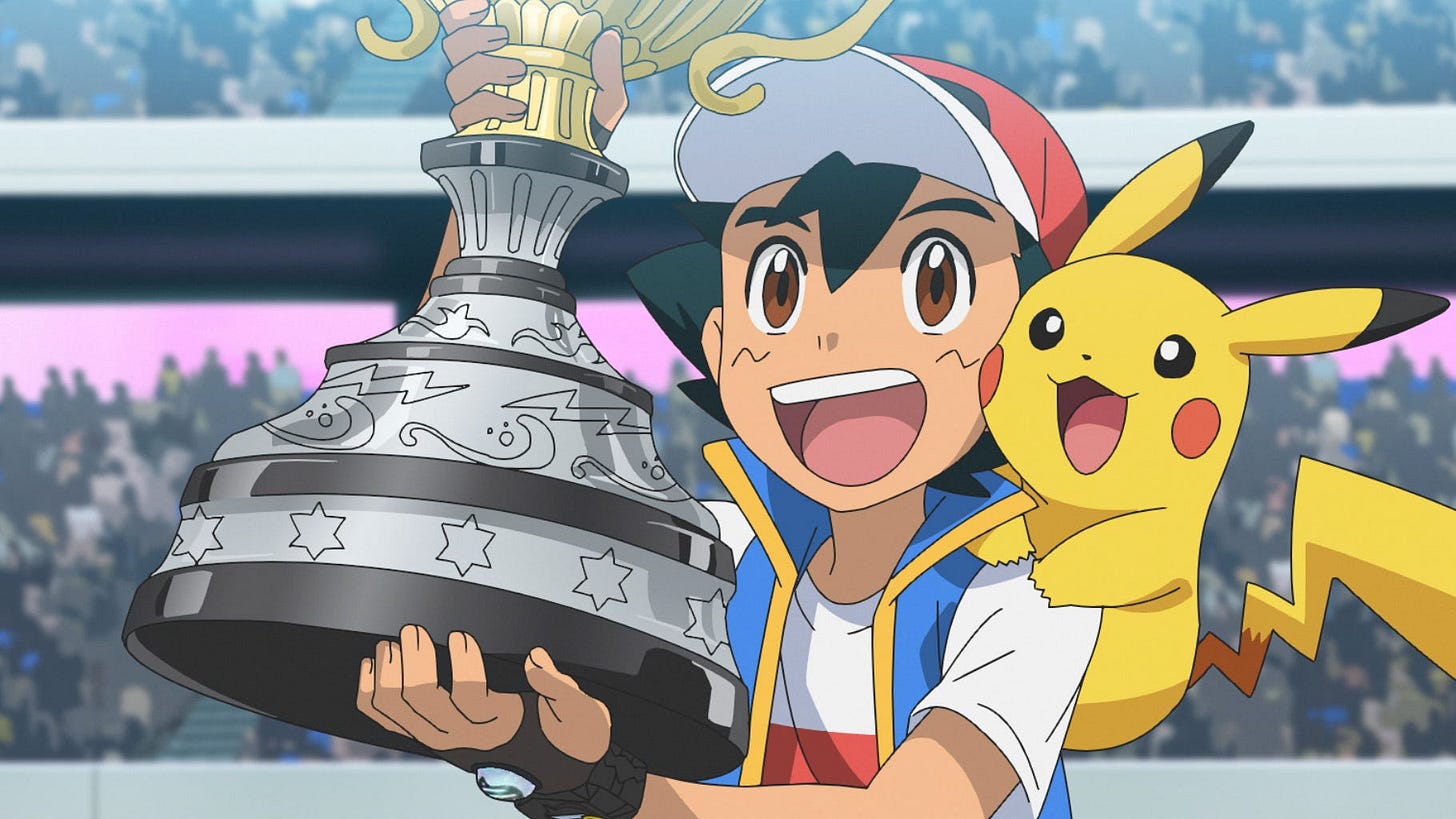Pokémon is the highest-grossing entertainment media franchise of all-time.
Not Mickey Mouse, Star Wars, Harry Potter, or the Marvel Cinematic Universe.
A lot of us grew up with Pokémon over the years. From the anime, trading cards, video games (including Super Smash Bros.), merchandise & memorabilia, to Pokémon GO, the franchise has been with us at every phase of our lives with a simple premise - catch ‘em all and become the very best.
I presumed that the majority of you reading this probably have not been keeping up with the latest on Pokémon, so have decided to take the responsibility. This is not a primer or a history lesson, so I’ll address some latest developments and personal anecdotes here.
The Profits
The Pokémon Company announced its most successful year ever with an astounding ¥297.5 billion ($1.9 billion) for the fiscal year up to February 29, 2024. Net profit was at ¥63 billion ($400 million). It has actually been doing even better every year since 2018, even having managed the Covid-19 pandemic well in 2020:
If anything, The Pokémon Company’s revenue continues to rise every year as a new milestone. How so?
Well first, the flagship video game series on Nintendo gaming consoles have been a mainstay for decades. The latest iterations - Scarlet & Violet (2022) - have sold 24.36 million copies globally, only behind Sword & Shield (2019) and of course Red, Blue & Green (1998). I dropped off after Black & White (2010) or so which feels like an eternity ago, but I’m glad to see the series continuing to do very well.
Pokémon Sleep, a sleep-tracking mobile application rewarding users for sleep quality, has recorded 10 million downloads in the first month of launch in summer 2023. The only way to play this “game” is to sleep consistently, hence the app blends entertainment with sleep research.
There is also an upcoming mobile trading card game titled Pokémon Trading Card Game Pocket, which builds on the traditional trading cards for an immersive experience in card collection and battles. It will not contain any NFTs and will emphasize instead digital card collecting within the game. It’d actually be unnecessary to vigorously add blockchain-compatible infrastructure to an already successful franchise that doesn’t require it.
As for films & TV, there hasn’t been a human adaptation of Ash Ketchum, but Netflix is developing a live-action TV series. This also ties into transmedia storytelling, an idea which I have analyzed before. Both Detective Pikachu (2019, live-action) and Pokémon Concierge (2023, stop-motion) were innovative examples in which Pokémon IP was applied to create unique stories.
Also the anime is still ongoing, but we’ll get to that in a second. The company has mastered how to capitalize on its vast historic intellectual property (“IP”) and continues to create new adaptive entertainment forms in light of emerging technologies.
Notably, Pokémon GO.
Pokémon GO
I recall in 2016 when a company called Niantic released the Pokémon GO mobile game. Everyone was going outside that summer to catch Pokémon on the streets through their phone screens, which showed an augmented reality (AR) with wild Pokemon appearing every block. Chances are that you’ve tried to play this at least once. If not, go outside and try it today.

Even after 8 years, Pokémon GO is still doing quite well and has a strong fanbase, ranging from local meetups like Pokémon GO Fest NYC to the World Championship. This is probably as close as we’ll get to replicating the story, in which Pokemon trainers battle each other to become the very best [that no one ever was].
Personally, I believe Pokemon GO successfully demonstrated how Nintendo, The Pokemon Company, and Niantic tried to integrate innovative AR technology to appeal to a broader, more casual fanbase. While the classic Pokemon video game series would typically require a dedicated gaming console, Pokémon GO capitalizes on the ubiquity of smartphones, allowing almost anyone to jump into the game right away. Also, the game’s social component, which encouraged people to go outside and interact with others, was a significant advantage that further boosted fan community engagement.
A successful blend of technology, community, and the original IP everyone already loves.
The Lookalikes
In January 2024, Nintendo announced its intention to take legal action against the Japanese developer Pocketpair, the creator of the popular online game Palworld, for potential IP infringement. Take a look at this comparison here between some of the monsters in Pokémon versus Palworld:
A bit similar, right? No actual lawsuit has been filed yet, but let’s discuss some implications here.
For starters, Palworld is an open-world multiplayer survival game in which players tame creatures known as “Pals” to fight, build resources and bases, breed, etc. It’s been known as “Pokémon with guns” and has garnered huge success since its launch in January 2024, becoming the second-highest played game on Steam and has sold over 15 million units in a month. Much of Palworld’s success may be attributed to Pokemon fans seeking elements not present in the flagship series, such as gun violence or more expansive open-world gameplay.
I think that perhaps the biggest challenge for Palworld is the Pals’ significant resemblance to the existing Pokemon’s aesthetic. This obviously wouldn’t be the first time fans have made comparisons. There were other series, such as Digimon and Monster Rancher, that emerged in the late '90s and also explored friendships between humans and monsters. However, there were only broad similarities, leading to their peaceful and successful coexistence with Pokémon over the years.
Historically Nintendo, as the major owner of The Pokémon Company, has been aggressive in protecting its IP. The company frequently sends cease-and-desist orders against fan-made content, streamers, and emulator projects.
We should consider the balance of fan enthusiasm and the need for Nintendo to take proper steps to safeguard its official IP. This is crucial, given the great influence that Pokémon and Nintendo have had on the creative and gaming communities today.
The Face of the Franchise
As for the anime series, apparently Ash Ketchum has retired after finally becoming the Pokémon World Champion in 25 years. But in my opinion, the true face of the franchise was always Pikachu anyway.
For transparency, I have not really kept up with the anime series after Diamond & Pearl, which aired on TV networks from 2007-2011. It’s been an even longer time since I avidly watched and recorded every episode of the anime while I was in kindergarten in the late 1990s.
It seems that one of the main frustrations with the Pokémon anime series has been audience fatigue with the protagonist Ash’s failure to accomplish his goal of becoming World Champion in each new season and region he explores. The sidekicks (Misty, Brock, Tracey, May, etc) that most casual fans were familiar with were from an earlier era, while Ash & Pikachu have stayed the consistent. Over the span of 25 years, it's evident that the series has continued to rehash the same formula, merely introducing new sidekick characters and Pokémon rosters with each new region while character development has been very gradual.
As seen from the above, both Ash and Pikachu have retired and have been replaced by newer faces. What this implies for a generation of new Pokémon IP remains to be seen for now.
The Very Best In Us
As I conclude here, I reminisce on the days I had wanted to become a Pokémon master like Ash Ketchum (or in Korean, Han Ji-Woo) when I grew up. I used to go out to the neighborhood playground to trade Pokémon cards, eat Pokémon Bread (that included collectible Pokémon stickers), and play Pokémon ddakji.
I even recall watching a Pokémon musical when I was 6 years old at the local auditorium in Seoul. It wasn’t very good (in contrast to the Digimon musical, which blew me away), and I think it’s because there was no real plot per se. It was just Ash, Misty, and Pikachu fending off Team Rocket most of the time with a few comedic lines, instead of a conclusive arc surrounding Ash’s ambition to be a Pokemon master.
But perhaps Pokémon's greatest strength over the years has been its ability to adapt to various forms of media, including anime, video games, and trading cards, while maintaining a broad storyline and premise. Maybe it was this fluidity in the Pokémon universe that contributed to the fans' ability to engage with the franchise at any point in time, because the Pokémon were always waiting for us whether it was 1, 5, 10, or even 25 years later.
After moving to the US in 2002, I visited Times Square for the first time with my family. I was absolutely hyped to see The Pokemon Store near Rockefeller Center, which was basically the dream for every aspiring Pokémon master:
I tried to visit this store every time I was in Manhattan, until one summer I couldn’t locate it anymore. The store later rebranded as an official Nintendo Store showcasing various products including Pokémon. I am glad to live 5 minutes away from it today.
Many things have changed for Pokémon, such as its original New York store and Ash Ketchum’s journey in the anime series. But the remarkable adaptability and consistency with which The Pokémon Company has entertained global audiences persist even further. It truly deserves to be the most successful entertainment media franchise of all-time.
Summer is in full swing.
I have been organizing and participating in various summer social networking events, Tech Week, music events, etc. There is a bit I realized while navigating the intricacies of social dynamics in these circles, and perhaps it may be worthwhile to do a write-up on that experience soon.
If you’re in town, see you around!
-Wooseok Ki (Wooski)








